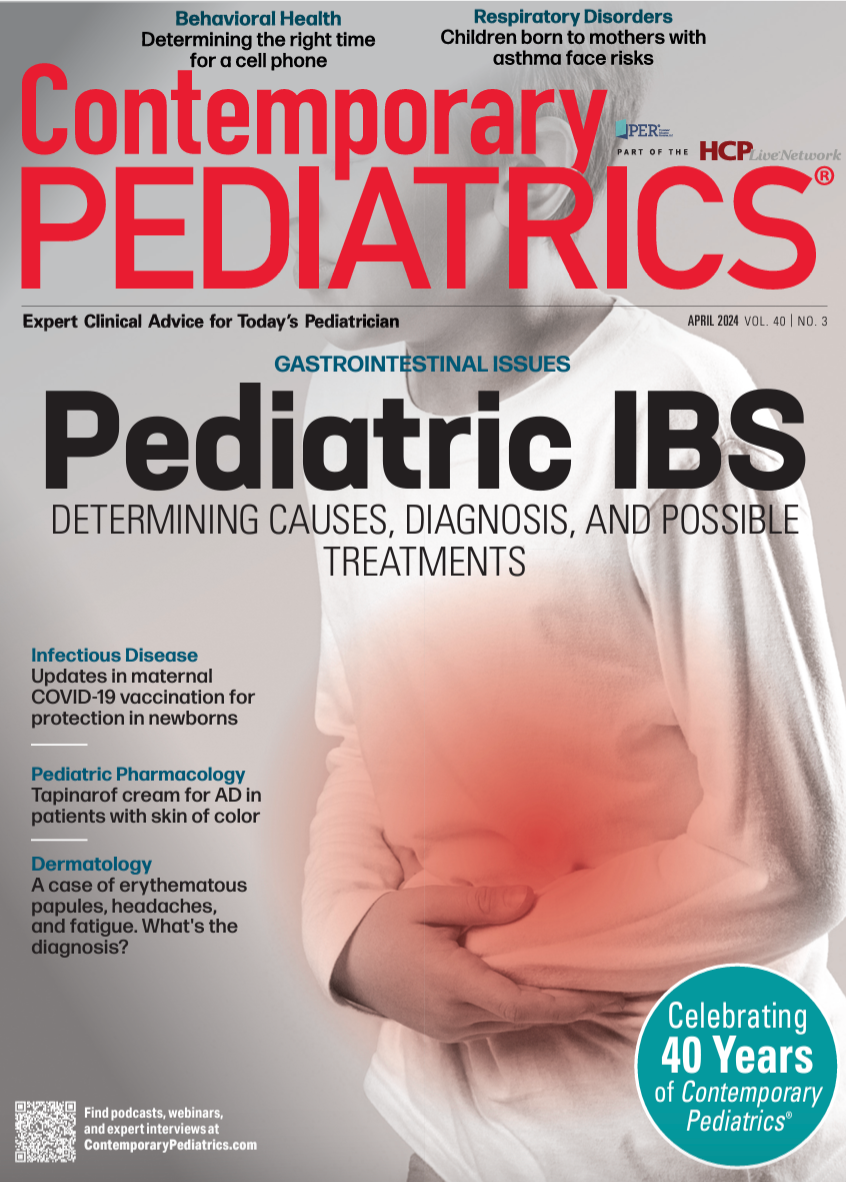What is the appropriate age for a cell phone?
HCPs can provide resources to help parents make an informed decision.
What is the appropriate age for a cell phone? | Image Credit: Rido - © Rido - stock.adobe.com.

Parents often wonder when the right time is to give their child a cell phone. In today’s digital age, children begin using their caregivers’ phones as early as late infancy and the toddler period, when the brain is rapidly developing.1 Many children progress to having their own cell phones by elementary school. With so many kids being handed phones, parents who want to wait longer feel the pressure to give in.2 Therefore, health care providers (HCPs) are uniquely positioned to guide parents in making this important decision.
Although there is limited evidence, discussing the benefits and risks of cell phone use by children is a crucial first step in guidance.
Benefits
Cell phones are major conduits to communication. They can be a source of education and entertainment for children. In certain situations, a cell phone can be used temporarily by a child for parent pickup or for monitoring while away from the caregiver. Many parents feel safer when their child has a phone at school in case of an emergency. Cell phones aid connection between friends and families, especially when loved ones are far away. For instance, video chatting was useful in many ways during the COVID-19 pandemic. In addition, smartphones function as portable computers providing convenient, on-the-go access to email, online platforms, various apps, valuable documents, and much more.3
Risks
Although there are many benefits, cell phones are not free from risks. Convenient access to a wide variety of digital media potentially exposes children to mature content and predatory influence, as well as the ability to create their own media content with a digital footprint.3 The developing brains of young children are vulnerable to digital technology, which, if not managed appropriately, can lead to overuse. Excessive media use has been associated with obesity, inadequate sleep time, developmental delays, and a negative impact on parent-child interactions.1
Kids are also potential targets for media marketing messages. Most free, downloadable apps for children under 5 years have commercial ads. Some of these advertisements incentivize children to click the ads by offering tokens. Advertisers also use children’s data to personalize ads with the intent to influence their behavior, having a potential impact on body image and self-esteem; cultural biases; tobacco, drug, and alcohol use; and eating habits.4,5
In a survey of over 4500 students in grades 3, 4, and 5, almost 50% reported having a cell phone, with the highest percentage among fifth graders. The study found that cell phone ownership was strongly related to cyberbullying over traditional bullying, and the finding was stronger in younger students.6 Adolescents widely use social media (SM) while on their cell phones. A survey of 539 children aged 13 to 18 years found that over 90% of the respondents used SM and 40% reported having experienced bullying. The study also found that some victims of cyberbullying went on to participate in cyberbullying themselves.7 Evidence also supports that cyberbullying increases the risk of suicide, depression, anxiety, low self-esteem, and school absenteeism.8,9
Making an informed decision
Ultimately, parents get to make the choice of whether or not to give their child a cell phone. Age should not necessarily be the main factor in making that decision. HCPs should advise parents to consider these characteristics:
• The child’s developmental maturity level
• The child’s willingness to follow rules
• The child’s sense of responsibility
• The needs of the family2
In collaboration with the American Academy of Pediatrics (AAP), AT&T developed a 10-question tool to help caregivers consider their child’s behavior and maturity and their family values to gauge cell phone readiness. The recommendation results indicate whether a child is ready, almost ready, or not yet ready. In addition, the tool offers further guidance and resources, such as how to activate parental controls and create a family media use plan.10
Digital technology is ubiquitous in the lives of children. Parental focus should be on balancing cell phone use and building safe habits. Therefore, provider guidance on planning to reduce risks and implement preventive strategies is critical. Resources on having conversations with children about media use; parents modeling healthy use themselves; setting parental controls; and screening for age-appropriate content, such as apps, games, and SM, are all important.3 In addition, caregivers should remain vigilant about the changing landscape of digital platforms to understand the potential pitfalls and monitor the content their child is consuming. Parents can educate themselves on how to be good digital parents by watching the Family Online Safety Institute’s Good Digital Parenting video series.11
Finding balance and creating safety
Before children get their own cell phones, parents should set basic safety rules. Common Sense Media suggests these basic rules for cell phone ownership:
• Text with respect and understand private texts can easily become public.
• Refrain from calling or answering unknown numbers.
• Take and share pictures only with consent.
• Download apps, games, music, etc, only with parental permission, as material may cost money and contain mature content.
• Post with thoughtful consideration, being careful to protect private information and location.12
In addition, the family media plan by the AAP is a customizable template caregivers can complete online to set safe boundaries and gain practical tips for their children using media and electronic devices. Parents can print the plan for each child for age-based guidance including categories on screen time, screen-free zones, choosing good content, kindness and empathy, privacy and safety, and creating media balance. For providers short on clinical time, sharing this tool with families provides anticipatory guidance on media use concerns in children.13
Parents may determine their child is not ready for a smartphone but might appreciate healthier, more age-appropriate alternatives. Instead of a smartphone, a child’s first phone could include these options:
• A smartwatch for kids, such as Verizon’s Gizmo Watch or the TickTalk
• A basic phone with a limited range of functions, such as the Nokia 225
• A flip phone, such as the Jitterbug Flip, with GPS tracking
• A prepaid phone for a trial run, by Mint, Tello, or T-Mobile2
Advocacy
As parents meet the challenge of managing media use in their children, HCPs have an additional role of advocacy in ensuring kids are safe while using digital technology, including cell phones. For example, the bipartisan Kids Online Safety Act was introduced in the Senate in May 2023 to challenge online platforms such as social media companies to develop stricter regulations, end targeted advertising, and provide parents with the means to protect their kids online. HCPs can contact their representatives to encourage them to support the bill.14 Providers can also advocate at the public school level for digital literacy curricula and to gauge the safety of digital media used by students.5
Conclusion
Cell phones are remarkable digital tools and when used correctly can enhance the lives of children and adults. However, because of the vulnerability of the developing child and adolescent brain, documented health-related concerns, and the ever-changing dangers posed by media platforms, it is necessary for providers to help parents decide the right time to give their child a phone. HCPs need to build an arsenal of resources and strategies to equip parents in gaining digital literacy, becoming good digital parents, and raising children who are good digital citizens. There is also a need for advocacy to hold policymakers and media companies accountable in protecting kids in this digital age.
Click here for more from the April issue of Contemporary Pediatrics.
References:
1. Council on Communications and Media. Media and young minds. Pediatrics. 2016;138(5): e20162591. doi:10.1542/peds.2016-2591
2. Cellphones and devices: a guide for parents and caregivers. Common Sense Media. Updated September 23, 2023. Accessed July 7, 2023. https://www.commonsensemedia.org/articles/cellphones-and-devices-a-guide-for-parents-and-caregivers
3. Radesky J. Your child’s first phone: are they ready? HealthyChildren.org. Updated August 22, 2022. Accessed July 8, 2023. https://www.healthychildren.org/English/family-life/Media/Pages/Cell-Phones-Whats-the-Right-Age-to-Start.aspx
4. 5 unhealthy ways digital ads may be targeting your child. HealthyChildren.org. Updated June 22, 2020. Accessed July 8, 2023. https://www.healthychildren.org/English/family-life/Media/Pages/5-Unhealthy-Ways-Digital-Ads-May-Be-Targeting-Your-Child.aspx
5. Radesky J, Chassiakos YLR, Ameenuddin N, Navsaria D; Council on Communication and Media. Digital advertising to children. Pediatrics. 2020;146(1):e20201681. doi:10.1542/peds.2020-1681
6. Englander E. Cell phone ownership and cyberbullying in 8-11 year olds: new research. Pediatrics. 2018;142(1, meeting abstracts):724. doi:10.1542/peds.142.1MA8.724
7.Shakir T, Bhandari N, Andrews A, et al. Social media and its impact on adolescents. Pediatrics. 2018;141(1, meeting abstracts):240. doi:10.1542/peds.141.1MA3.240
8. Arnon S, Brunstein Klomek A, Visoki E, et al. Association of cyberbullying experiences and perpetration with suicidality in early adolescence.JAMA Netw Open. 2022;5(6):e2218746. doi:10.1001/jamanetworkopen.2022.18746
9. Zhu C, Huang S, Evans R, Zhang W. Cyberbullying among adolescents and children: a comprehensive review of the global situation, risk factors, and preventive measures. Front Public Health. 2021;9:634909. doi:10.3389/fpubh.2021.634909
10. Digital parenting. AT&T. Accessed July 9, 2023. https://screenready.att.com/digital-parenting/
11. How to be a good digital parent toolkit. Family Online Safety Institute. Accessed July 10, 2023.https://www.fosi.org/how-to-be-good-digital-parent
12. Cellphones and devices: a guide for parents and caregivers. Common Sense Media. Updated September 23, 2023. Accessed July 7, 2023. https://www.commonsensemedia.org/articles/what-are-the-basic-safety-rules-for-cellphones
13. Make a family media plan. HealthyChildren.org. Updated January 29, 2024. Accessed July 8, 2023. https://www.healthychildren.org/English/family-life/Media/Pages/How-to-Make-a-Family-Media-Use-Plan.aspx
14. Kids Online Safety Act, S.1409, 118th Cong (2023). Accessed . https://www.congress.gov/bill/118th-congress/senate-bill/1409

Newsletter
Access practical, evidence-based guidance to support better care for our youngest patients. Join our email list for the latest clinical updates.